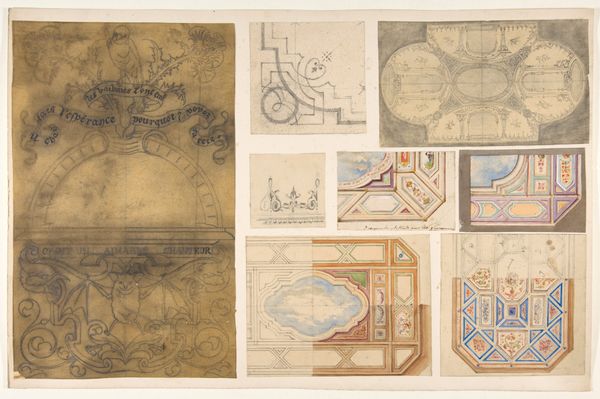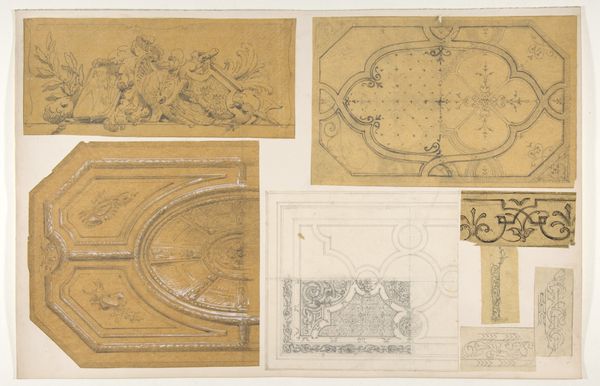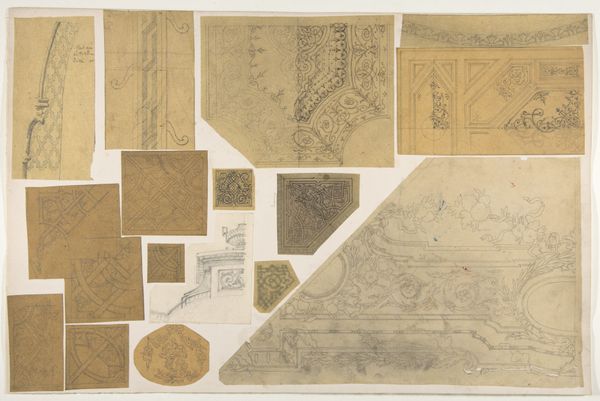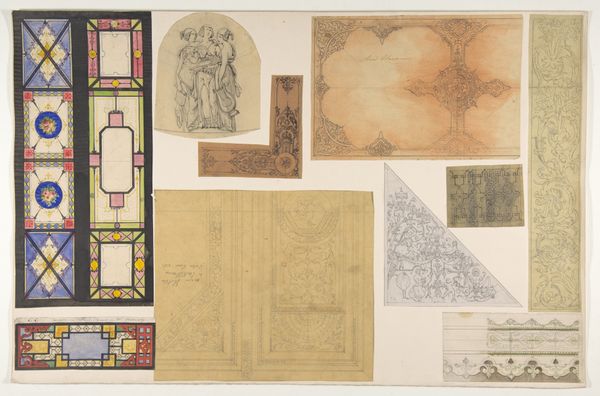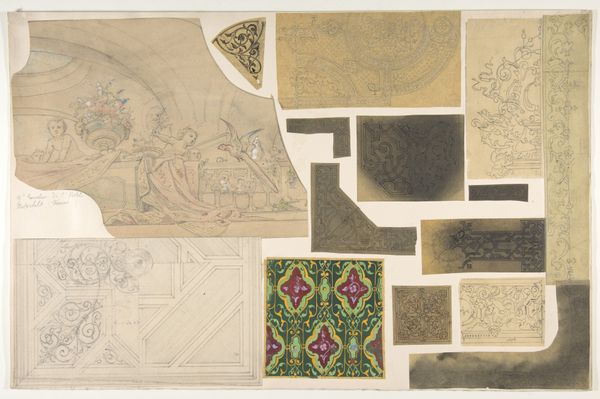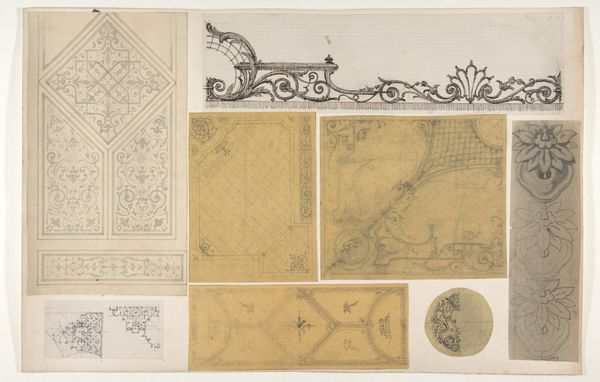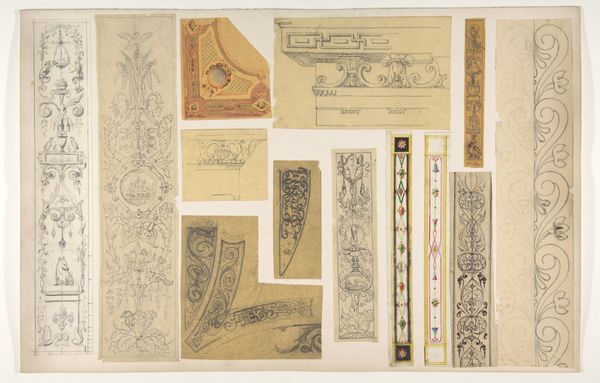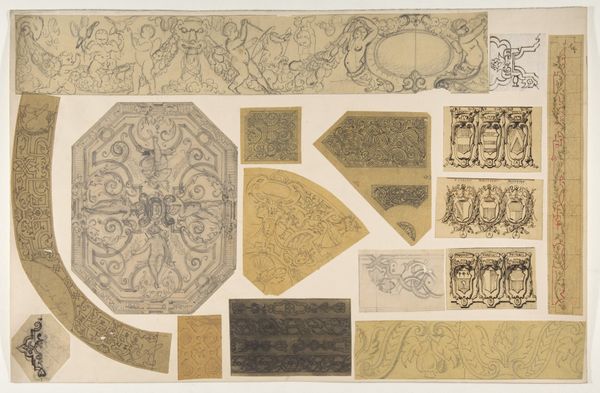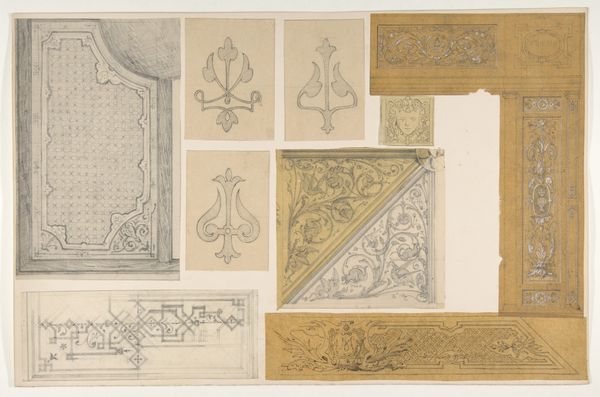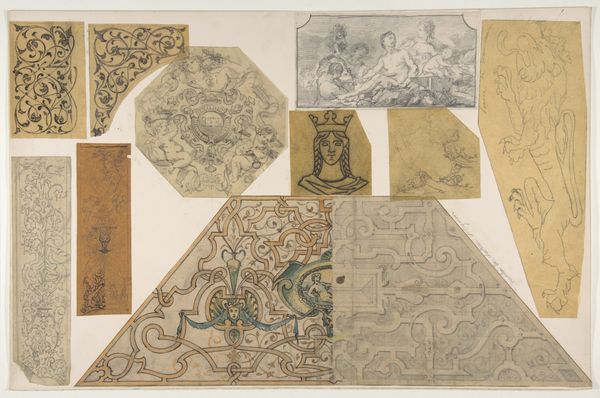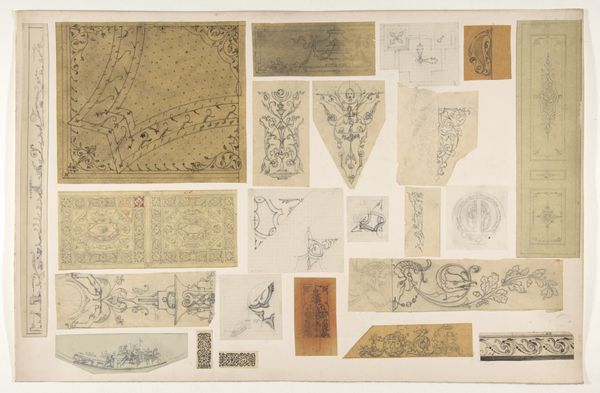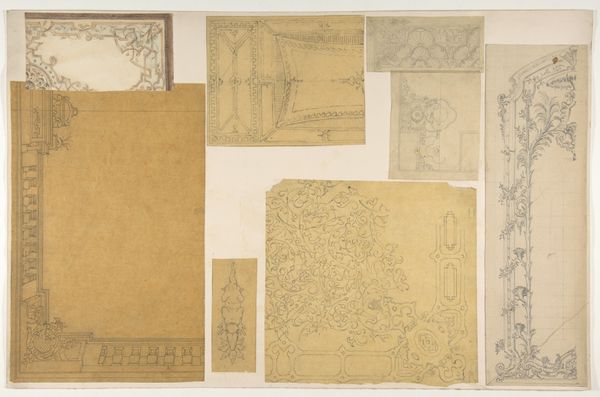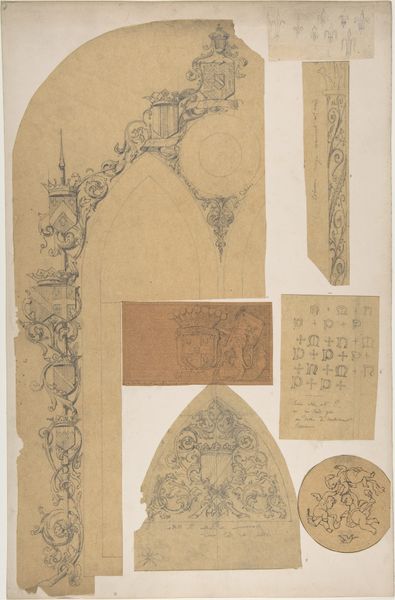
Nine designs for the painted decoration of an interior, possibly for the Hôtel Rothschild, Vienna 1845 - 1900
drawing, print, etching, paper, ink
drawing
etching
etching
paper
ink
watercolour illustration
Dimensions: mount: 12 3/16 x 18 3/4 in. (31 x 47.7 cm)
Copyright: Public Domain
Curator: Here we have "Nine designs for the painted decoration of an interior, possibly for the Hôtel Rothschild, Vienna," created sometime between 1845 and 1900. It's attributed to Jules-Edmond-Charles Lachaise and is a combination of drawing, print, and etching in ink and watercolour on paper. Editor: My immediate impression is one of incredible delicacy and meticulousness. Each design, a symphony of swirling lines and repeating motifs, speaks to the patient labour involved. There's also a kind of quiet elegance to the material; the paper itself looks aged, bearing witness to history. Curator: Precisely. The designs, conceived possibly for the Hôtel Rothschild, point towards the lavish interiors demanded by the burgeoning elite during this period. This reflects a society undergoing rapid industrial expansion and a marked concentration of wealth. Editor: Right, the Rothschilds! And I think that impacts the work itself; you can feel the implied weight of production behind it. Think of the paper mill, the etchers, the painters… all contributing to this vision of luxurious excess, even at the conceptual stage. Curator: Absolutely. The commission itself signifies the social power and influence exerted by the Rothschild family and how art played a role in constructing and solidifying that image. Editor: What strikes me, too, is how the materials chosen impact the viewing experience. Etching and watercolour, they lend an air of ephemeral beauty, making this look almost like something found and preserved. Like a glimpse into a specific time and place where these intricate skills and materials were available and esteemed. Curator: A fair point, it reminds us that the aesthetic value placed on this work now wasn't necessarily the same as its original function—a preliminary sketch. How the function influenced value and labor, I feel, shapes this pieces relevance. Editor: It highlights how even preparatory designs are worth appreciating for the material craftsmanship that has gone into making it. And like you said, as a historian it also begs the question of whose labour and consumption it catered to. Curator: Thinking about its preservation within a museum context, displayed here at the Met, invites further analysis into how art institutions validate and legitimize particular cultural narratives. It’s powerful. Editor: Ultimately, viewing these interior decorations prompts one to question not only the artist's intentions but also to ask critical questions regarding class, value, materials, and production, questions that enrich its layered complexity.
Comments
No comments
Be the first to comment and join the conversation on the ultimate creative platform.
